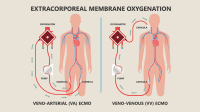Introduction
SOUTH CAROLINA is predominately a rural state that consistently demonstrates poor health rankings, due to the lack of Medicaid expansion, healthcare deserts, and a decreasing physician supply. Nurse practitioners, certified nurse midwives, and clinical nurse specialists are seeking full practice authority as one legislative strategy to improve access to care and outcomes. To prepare for the legislative initiative, the Coalition for Access to Healthcare Board conducted a survey of APRNs’ readiness to seek full practice authority as well as identify any perceived barriers to practice and access to care.
 The 2022 public health data paint a dismal picture for chronic disease management and outcomes (Table 1). Additional data highlights 27 of 46 counties having none or fewer than three primary or specialty physicians in the areas of family, women’s health, pediatrics, and psychiatry per 10,000 people. Health rankings demonstrate SC has the 4th highest rate of preterm births among all 50 U.S. states and 8th highest rate of maternal deaths.1-2,4 On a positive note, according to Area Health Education Consortium (AHEC), after APRN scope of practice modifications in 2018, primary care access improved slightly, increasing from 41st to 37th, with NPs and CNMs maintaining primary care services in non-metropolitan areas of South Carolina.1,5
The 2022 public health data paint a dismal picture for chronic disease management and outcomes (Table 1). Additional data highlights 27 of 46 counties having none or fewer than three primary or specialty physicians in the areas of family, women’s health, pediatrics, and psychiatry per 10,000 people. Health rankings demonstrate SC has the 4th highest rate of preterm births among all 50 U.S. states and 8th highest rate of maternal deaths.1-2,4 On a positive note, according to Area Health Education Consortium (AHEC), after APRN scope of practice modifications in 2018, primary care access improved slightly, increasing from 41st to 37th, with NPs and CNMs maintaining primary care services in non-metropolitan areas of South Carolina.1,5
To date, 27 states, Washington DC and the Veterans Administration have full practice authority for APRNs which authorizes NPs, CNMs and CNSs to practice “to the fullest extent of their education” as recommended by the Institute of Medicine. 6,7,10 Based on access and health data indicating health care desserts and poor health outcomes for South Carolinians, full practice authority is essential now.1-5
Purpose
The purpose of this descriptive study was to determine readiness to pursue full practice authority and identify perceived barriers or access to care for Nurse Practitioners (NPs), Certified Nurse Midwives (CNMs), and Clinical Nurse Specialists (CNSs).
Background
Studies consistently show that NPs have excellent outcomes for chronic disease management and for CNMs reducing C-section rates. 11,14-24 Literature also indicates that NPs and CNMs are safe and cost-effective providers.11,18-19,31 Physician groups contend that supervision and/or collaboration ensures that APRNs provide safe care.30 During the COVID-19 pandemic, the Governor issued a temporary Public Health Emergency Order by temporarily removing collaborative agreement requirements and other restrictions. Removing these restrictions facilitated APRNs to have additional authority to care for patients and establish primary care practices across SC. The SC Board of Nursing reported less than 0.3 % of APRNs were disciplined during the Pandemic and less than 0.1% overall, mirroring national data.28 Patient safety is a frequently cited reason by physicians that APRNs should not fully practice to their training and licensure, however, there is a paucity of evidence that supports unsafe care. Furthermore, there is no evidence to support quality of care is compromised or unsafe without physician collaboration or supervision.9,25-26,30 Rather regulatory restrictions lobbied by physician groups place undue access burdens and barriers to care for the patient and increase cost to healthcare system.29
Methods
A convenience sample of 1500 APRNs (NPs, CNSs, CNMs) was asked to complete a 15-item questionnaire via Survey Monkey over three months in 2023. The APRN email lists were obtained from four regional NP and CNS groups, one statewide CNM group, and the South Carolina Nurses Association (SCNA). Criteria for inclusion were currently licensed and actively practicing as a SC NP, CNM or CNS.
The non-psychometric instrument, developed by the Coalition for Access to Health Care, a nonprofit, APRN advocacy group, consisted of 14 questions containing discrete noncontinuous variables related to full practice authority, perceived barriers to practice, and access to care. One item requested additional feedback, allowing respondents to “free text”.8 Consent was implied via voluntary and anonymous participation. No identifiers could be traced to the participant. Data were retrieved by the President of the Coalition and maintained in a secure encrypted excel file for analyses. Data were tabulated for descriptive statistics only. No inferential data or thematic analyses were conducted. There were no conflicts of interest or funding to report. Institutional Review Board approval was not sought because this study was conducted for quality improvement.
Results
Description of the Sample Characteristics
The sample consisted of 368 APRN respondents, for a 25% percent participation rate. The survey indicated a majority of FNPs (n=267, 73%) with 21% participants (n=82) having 21 years or more in practice. A majority (n=165, 45%) provide services in rural areas while some (n=151, 41%) indicated providing services in both rural and urban areas. Most respondents (n=323, 84%) provide primary care across various settings while a portion (n=43, 16%) provide care in acute care settings. For this survey, primary care was defined as family, pediatrics, gerontology, women’s health, mental health, long term care, college health, free clinics, rural health care centers, federally qualified healthcare centers, prison health, school-based clinics, private office, and hospice/palliative care. Acute care was defined as in-hospital based specialty care, emergency room care, and critical care (Table 2).

Descriptions of Perceived Barriers to Care or Access
Findings showed that most respondents (n=244, 67%) identified the current requirement for a collaborative physician as a perceived barrier to practice. Respondents voiced concern that the physician could dissolve the agreement resulting in the closure of their practice or suspension to practice or prescribe. Participants (n=145, 40%) indicated their collaborating physician charged a cost-prohibitive fee ranging from $500 to $3000 per month for this requirement. Participants (n=181, 50%) also indicated that the requirement to ensure quality of care by conducting audits or meetings, presented logistical challenges during busy practice times and during the pandemic when face to face meetings were restricted. Other impediments included required shared or incident to billing (n=103, 28%), a lack of role or title recognition within institutions (n=109, 30%) prohibiting the use of “Doctor” despite educational achievement and statute, and lack of APRN representation on employer governing bodies or organizations that render decisions on scope of practice, collaboration policies, and billing practices (n=176, 48%) (Table 3).

Comments by participants emphasized obstacles to practice such as the inability to obtain a CLIA waiver, required collaboration agreement, reimbursement inequities for the same Current Procedural Terminology (CPT) code service, and the inability to order controlled medications in birthing centers.
An overwhelming majority, (n=351, 96%) of respondents, replied “yes” to supporting full practice authority legislative changes. Moreover, (n=241, 68%) indicated they would financially support legislative efforts for full practice authority. Among those that would not financially support full practice efforts (n=114), cited cost-prohibitive operating expenses for their own APRN practice and a lack of salary support in their current position. While a qualitative review of respondents’ comments was not conducted, certain themes did emerge. Responses indicated organizational disrespect, lack of role/title, restrictive physician collaborative agreements, physicians not certified, transition to practice, reimbursing physicians for collaborative agreements, antiquated scope of practice laws, and support for full practice authority.
Discussion
Our survey indicated that the majority of respondents were Family Nurse Practitioners practicing in a variety of primary care settings. Findings also identified perceived barriers to practice and access to care including the inability to order diabetic shoes, legal requirements for a collaborating physician, organizational barriers, and a lack of representation on organizational boards or committees that render decisions on scope of practice process and billing practices. A majority indicated their support for seeking full practice authority.
In South Carolina, APRNs are required to establish a written collaborative agreement with a physician or physicians who are available for consultation and advice.30,31 Unfortunately, if the physician(s) dissolves the agreement, the APRN is unable to practice or prescribe until another physician agrees to enter into a collaborative agreement. This unintended consequence results in practice closings, APRN unemployment, care delays, and decreased access to patient care.
Conclusion
Allowing APRNs to practice to the full extent of their education and training strengthens the overall health of communities through increased access to care. This is especially true for primary, prenatal, and mental health care. Removing antiquated barriers to practice will allow advanced practice nurses to establish practices, manage patients in outpatient and underserved settings, and reduce emergency department visits for primary care, pediatrics, women’s health, and mental health care.
References
1 South Carolina Office for Healthcare Workforce. (2021, December). AHEC SC Health Professions Data Workbook. https://www.scahec.net/scohw/reports.
2 March of Dimes. (2022). March of Dimes Report Card. https://www.marchofdimes.org/report-card.
3 South Carolina Maternal Morbidity and Mortality Review Committee. (2021). South Carolina Maternal Morbidity and Mortality Review Committee: Legislative Brief 2021. https://scdhec.gov/sites/default/files/media/document/2021SCMMMRCLegislativeBrief.pdf.
4 March of Dimes. (2022, January) Preterm Birth. https://www.marchofdimes.org/peristats/data?reg=99&top=3&stop=362&lev=1&slev=1&obj=1.
5 United Health Foundation. (2022). America’s Health Rankings 2022 Annual Report. https://assets.americashealthrankings.org/app/uploads/allstatesummaries-ahr22.pdf.
6 American Association of Nurse Practitioners. (2022, October). State Practice Environment. https://www.aanp.org/advocacy/state/state-practice-environment.
7 Institute of Medicine of the National Academies. (2011). The Future of Nursing: Leading Change, Advancing Health. https://doi.org/10.17226/12956.
8 Coalition for Access to Healthcare. (2023). https://www.coalitionforaccesstohealthcare.com/.
9 Traczynski, J., & Udalova, V. Nurse practitioner independence, health care utilization, and health outcomes. Journal of Health Economics. 2018;58: 90-109.
10 Federal Register. (2016, December 14). Veterans Full Practice Authority for APRNs ruling. https://federalregister.gov/d/2016-29950.
11 Sonenberg A. (2023). Maternity care deserts in the US. JAMA Health Forum. 4(1): 1-3. https://jamanetwork.com/journals/jama-health-forum/fullarticle/2800629.
12 Physician Specialty Growth in US. (2023, January 18). Most and least active physicians by specialty. https://www.healthgrades.com/pro/most-and-least-active-physicians-by-specialty.
13 Buerhaus, P., Perloff, J., Clarke, S., O’Reilly-Jacob, M., Zolotusky, G., & DesRoches, C. M. Quality of primary care provided to Medicare beneficiaries by nurse practitioners and physicians. Medical Care, 2018;56(6): 484-490.
14 Everett, C.M., Morgan, P., Smith, V.A., Woolson, S., Edelman, D., Hendrix C.C., Berkowitz, T., White, B., & Jackson, G.L. Primary Care provider type: Are there differences in patients’ intermediate diabetes outcomes? Journal of the American Academy of Physician Assistants, 2019;32(6), 36-42.
15 Jackson, G.L., Smith, V.A., Edelman, D., Woolson, S.L., Hendrix, C.C., Everett, C.M., Berkowitz, T.S., White, B.S., & Morgan, P.A. Intermediate diabetes outcomes in patients managed by physicians, nurse practitioners, or physician assistants: A cohort study. Annals of Internal Medicine, 2018;169(12), 825–835.
16 Kippenbrock, T., Emory, J., Lee, P., Odell, E., Buron, B., & Morrison, B. A national survey of nurse practitioners’ patient satisfaction outcomes. Nursing Outlook, 2019;67(6), 707-712.
17 Liu, C. F., Hebert, P. L., Douglas, J. H., Neely, E. L., Sulc, C. A., Reddy, A., & Wong, E. S. Outcomes of primary care delivery by nurse practitioners: Utilization, cost, and quality of care. Health Services Research, 2020;55(2), 178-189.
18 Muench, U., Guo, C., Thomas, C., & Perloff, J. Medication adherence, costs, and ER visits of nurse practitioner and primary care physician patients: evidence from three cohorts of Medicare beneficiaries. Health Services Research, 2019;54(1), 187-197.
19 Rantz, M. J., Popejoy, L., Vogelsmeier, A., Galambos, C., Alexander, G., Flesner, M., & Petroski, G. Impact of advanced practice registered nurses on quality measures: The Missouri quality initiative experience. Journal of the American Medical Directors Association, 2018;19(6), 541-550.
20 Sacket, D.L., Spitzer, W. O., Gent, M., & Roberts, M. The Burlington randomized trial of the nurse practitioner: Health outcomes of patients. Annals of Internal Medicine, 1974;80(2), 137-142.
21 Spitzer, W.O., Sackett, D.L., Sibley, J.C., Roberts, M., Gent, M., Kergin, D.J., Hacket, B.D., & Olynich, A. The Burlington randomized trial of the nurse practitioner. New England Journal of Medicine, 1974;290(3), 252-256.
22 Tapper, E. B., Hao, S., Lin, M., Mafi, J. N., McCurdy, H., Parikh, N. D., & Lok, A. S. The quality and outcomes of care provided to patients with cirrhosis by advanced practice providers. Hepatology, 2020;71(1), 225-234.
23 Yang, Y., Long, Q., Jackson, S. L., Rhee, M. K., Tomolo, A., Olson, D., & Phillips, L. S. Nurse practitioners, physician assistants, and physicians are comparable in managing the first five years of diabetes. The American Journal of Medicine, 2018;131(3), 276-283.
24 Brown, S.A. & Grimes, D.E. A meta-analysis of nurse practitioners and nurse midwives in primary care. Nursing Research, 1995;44(6), 332-9.
25 SC Board of Nursing Disciplinary Actions. Retrieved March 2023. https://eservice.llr.sc.gov/PublicOrdersWeb/?divisionId=17.
26 Martin, B., Bruck, M., Zhong, E. (2023). Evaluating the impact of executive orders lifting restrictions on Advanced Practice Registered Nurses during the COVID 19 Pandemic. Journal of Nursing Regulation 2023;14(1): 50-58.
27 Laws governing nursing and delegating to certified medical assistants. (2022). https://scstatehouse.gov/sess124_2021-2022/bills/613.html.
28 Federal Trade Commission. (2018, January 4). Proposed Pennsylvania Legislation Affecting Nurse Practitioners Likely to Benefit Competition and Consumers while Promoting Principles of Economic Liberty. https://www.ftc.gov/news-events/news/press-releases/2018/01/ftc-staff-proposed-pennsylvania-legislation-affecting-nurse-practitioners-likely-benefit-competition.
29 Laws governing nursing. (2023). https://www.scstatehouse.gov/code/t40c033.php.
30 Hoebelheinrich, K. Do Collaborative Practice Agreements Make APRNs Safe Practitioners? Nebraska Nursing News. (2021). https://center4nursing.nebraska.gov/sites/center4nursing.nebraska.gov/files/doc/Do%20Collaborative%20Practice%20Agreements%20Make%20APRNs%20Safe%20Practitioners%20%20Hoebelheinrich%20%26%20Ramirez%20%20Nursing%20News%20Winter%202020pdf.
31 Studdert, D. & Huynh, J. Nurse Practitioners as Safe as Physicians in Prescribing. Annals of Internal Medicine. Preprint posted online October 24, 2023. https://doi.org/10.7326/M23-0827.






















